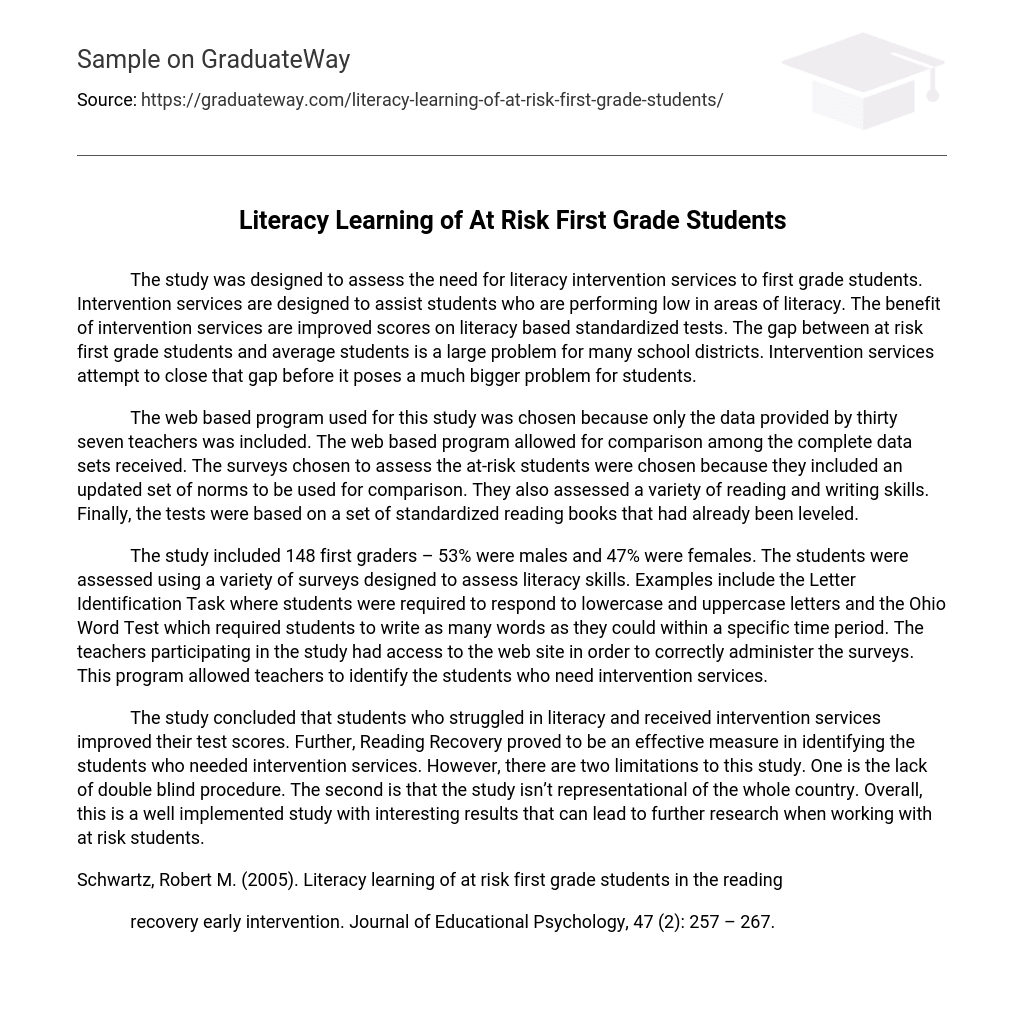The study was designed to assess the need for literacy intervention services to first grade students. Intervention services are designed to assist students who are performing low in areas of literacy. The benefit of intervention services are improved scores on literacy based standardized tests. The gap between at risk first grade students and average students is a large problem for many school districts. Intervention services attempt to close that gap before it poses a much bigger problem for students.
The web based program used for this study was chosen because only the data provided by thirty seven teachers was included. The web based program allowed for comparison among the complete data sets received. The surveys chosen to assess the at-risk students were chosen because they included an updated set of norms to be used for comparison. They also assessed a variety of reading and writing skills. Finally, the tests were based on a set of standardized reading books that had already been leveled.
The study included 148 first graders – 53% were males and 47% were females. The students were assessed using a variety of surveys designed to assess literacy skills. Examples include the Letter Identification Task where students were required to respond to lowercase and uppercase letters and the Ohio Word Test which required students to write as many words as they could within a specific time period. The teachers participating in the study had access to the web site in order to correctly administer the surveys. This program allowed teachers to identify the students who need intervention services.
The study concluded that students who struggled in literacy and received intervention services improved their test scores. Further, Reading Recovery proved to be an effective measure in identifying the students who needed intervention services. However, there are two limitations to this study. One is the lack of double blind procedure. The second is that the study isn’t representational of the whole country. Overall, this is a well implemented study with interesting results that can lead to further research when working with at risk students.
Schwartz, Robert M. (2005). Literacy learning of at risk first grade students in the reading
recovery early intervention. Journal of Educational Psychology, 47 (2): 257 – 267.





